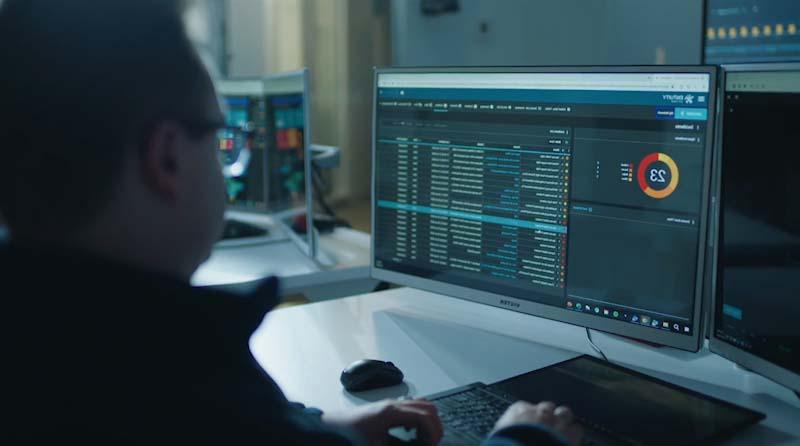What Is Hyperconverged Infrastructure (HCI)? – Benefits and Use Cases
ParkView Managed Services
The availability of cloud computing has encouraged many organizations to move at least some of their processes to the cloud, but many data centers still maintain at least some physical footprint. More businesses are finding that the cloud doesn’t solve their needs in the way they hoped it would and are migrating back (at least in part) to a physical data center (recall the outsourcing trend in the early 2000’s?).
For all these instances, hyperconverged infrastructure (HCI) offers some significant operational benefits, but what is an HCI? What benefits does a hyperconverged infrastructure appliance offer to organizations like yours? This post will explore what you need to know about HCI.
Jump-to Section
What Is Hyperconverged Infrastructure (HCI)?
Benefits of Hyperconverged Infrastructure
Before we touch on the benefits of HCI or its use cases, let’s first define what we mean by hyperconverged infrastructure solutions.
What Is Hyperconverged Infrastructure (HCI)?
Hyperconverged Infrastructure (HCI) brings the cloud operating experience into an on-prem or cluster appliance. Compute, network, and storage systems are put into a 1U or 2U pizza box with CPU, memory, and disk. An operating stack is installed on the appliance consisting of Hypervisor(s), Software defined storage, and management/orchestration layers in order to deliver the cloud experience with self-contained appliances rather than relying on a third party.
Those modular blocks we just mentioned are used to replace aging and inflexible legacy servers, arrays, and other devices. In a nutshell, HCI delivers a modern operating environment with the ability to:
- quickly deliver infrastructure & applications to the business
- modernize and streamline the IT acquisition model
- deliver a cloud experience on-prem, in a hybrid model (interfacing with most public cloud providers)
- better utilize IT assets
The result? Agility, flexibility, scalability, and improved cost efficiency.
Now that we’ve explored what HCI is, let’s look at some of the most important benefits that it can deliver.
Benefits of Hyperconverged Infrastructure
Adjusting your data center infrastructure is a major undertaking, so adopting an HCI system must be justified. Consider these six benefits of using hyperconverged infrastructure appliances in your data center or server room.
1. Your Design Needs Are Simplified
One of the most significant benefits of hyperconverged infrastructure is the ability to simplify your data center designs. It’s a terrific way to eliminate the rigidity inherent in pre-cloud data center structures, which rely on separate storage silos, server tiers, and networking. It also does away with the need for IT to spend weeks or months provisioning new infrastructure and ensures that IT services are available at a moment’s notice.
With HCI, the contained hardware and software are put on a single lifecycle so you’re not working with disparate support dates from separate server, storage and networking providers. The time and expense required to manage information and deliver applications are radically simplified.
2. It Integrates with the Cloud
HCI is built onto a commodity hardware stack using either commercial or Open Source software stacks – such as VMWare (with VSAN), Open Stack, XCP-ng to name a few. The immediate benefit here is delivering IT resources now takes minutes as opposed to months in a traditional 3-tier model, and additionally building hybrid clouds to expand IT resources is simpler than ever before. More and more organizations are finding the benefits of hybrid clouds that allow them to keep sensitive information in-house while providing cloud-based connectivity for clients, technicians, and others.
3. Scalability
Scalability is a critical consideration for all data centers. However, it’s often hard to achieve, particularly in a legacy 3-tiered environment. With HCI, organizations can consolidate their systems into a HCI cluster and then scale it as necessary. This is good news for a variety of reasons, but particularly for organizations that want to start small and then grow as they become more confident and comfortable with hyperconverged infrastructure.
4. Scale Physical Footprint Down
Because hyperconverged infrastructure allows you to combine multiple legacy systems into a single amalgamation, it becomes possible to reduce the physical footprint of your data center. That could be good news for organizations considering data center relocation, but it also means that you can free up space for other needs. Eliminating unnecessary hardware also reduces Operating costs (OPEX), reduces hardware maintenance, and often a reduction in software licensing due to the efficiencies of the operating model.
5. Reduced Need for In-House IT Teams
With legacy systems, you needed to have deep IT expertise among your in-house team. However, hyperconverged infrastructure lets you get around that.

This is because you no longer need so many experts. It becomes possible to hire technology generalists, or even outsource your maintenance and management needs entirely.
6. Improved Disaster Recovery Capabilities
From hardware failure to rolling blackouts, organizations must be prepared for the unexpected today. Disaster recovery is never a simple thing, however HCI can be architected to withstand a complete site failure! Traditional 3-tier architecture is extremely complex to build total resiliency into, however using a software defined approach afforded by modern HCI this exercise becomes trivial so long as the underlying resources are adequate.
Top 5 HCI Use Cases
With the benefits of HCI discussed, it is now time to turn our attention to how this technology is being used in the real world. What are some of the most compelling use cases for hyperconverged infrastructure?
1. Maximize Access to Resources
Access to resources is an important consideration, but in legacy systems, storage, memory, and processing capabilities can be consumed quickly and unpredictably. With HCI, it becomes possible to increase system reliability and resource availability in a linear fashion. Organizations can also use HCI to ensure they’re utilizing their resources fully with a considerable degree of flexibility.
2. Service Reliability
IT transforms to a service provider to the business as the ability to continuously and reliably deliver services to their customers (business units within the organization) is essential. HCI helps IT achieve that. With a software-defined environment, organizations can build redundancy and reliability into the infrastructure for a fraction of the investment of traditional 3-tier. Resource utilization becomes predictable and linear, and the ability to grow the underlying resources in the most cost-efficient manner adds additional stability to the business.
3. Deal with Changing Demands
Service-based organizations deal with changing demands and varying bandwidth requirements throughout the year. Due to the scalable nature of hyperconverged infrastructure, these fluctuating needs can be met with little to no change in the physical data center configuration.

Further, not having to introduce new equipment or human capital to the mix during high-demand periods can really help streamline operations and keep both OPEX and CAPEX to a minimum.
4. Reduce Equipment Needs
HCI combines multiple aspects into a single software-defined package. One upshot of this is the ability to make solutions developed for clients lighter and more flexible, without reducing their capabilities. For instance, defense industry manufacturers are using HCI to reduce the weight and size of solutions developed for the military, without affecting functionality.
5. Future-Proof IT
Rapid change has become the norm, not just within the IT industry, but for all industries around the world. HCI solutions provide a way to protect against fragmentation related to rapid-scale changes by transitioning essential software to HCI, such as HR information systems, as well as ERP (Enterprise Resource Planning) software.
How to Maintain a Hyperconverged System After EOSL
All data center infrastructure eventually reaches its end of service life (EOSL) date. That applies to hyperconverged systems, as well. So how can you maintain your system after that point without access to the original equipment manufacturer (OEM)? The answer can be found in working with the right technology support partner.
For instance, at Park Place Technologies, we offer IT infrastructure managed services that allow us to support and monitor HCI solution in the same way that an OEM would. We can provide both the hardware and hypervisor break-fix solutions your HCI requires for several years after the hardware and firmware has been deemed EOSL by the manufacturer. So, whatever happens with your HCI, we are the full-stack service provider you need!
In fact, we were recently presented with an opportunity related to HCI in the form of an end of service life VBlock—a converged solution using EMC storage, Cisco UCS blade servers, and a Cisco networking kit. Though we had been supporting the hardware component of the customer’s environment for years, by supporting the VMware hypervisor that runs on each UCS blade server under our coverage as well, we are now providing comprehensive management and maintenance on their entire HCI solution.
Find the Right Support Partner for Your Hyperconverged Appliance
Gone are the days of having to choose between the cloud and an on-prem environment. And while there are many benefits to maintaining a hybrid infrastructure with a hyperconverged appliance, without a skilled support partner possessing the expertise to handle all components of your HCI solution, you are setting your virtualized environment up for failure.
With ParkView Managed Services from Park Place Technologies, we bring the tools and expertise your organization requires to your physical, cloud, and of course virtual technologies. Our 7×24 Enterprise Operations Center (EOC) engineers support all major enterprise operating systems and virtual platforms, including Microsoft, Linux, and VMware, to provide you with incident management, patch management, and remediation for your HCI cluster. That means we can monitor and support your entire hyperconverged infrastructure solution, from the hardware to the hypervisor—quite similar to how the OEM would but at a fraction of the cost!
Interested in learning more about ParkView Managed Services and how it could benefit your organization’s hyperconverged infrastructure? Contact us today to discuss your HCI post-warranty support needs!



